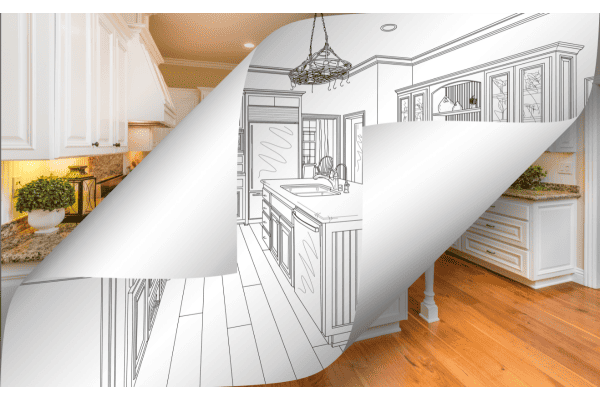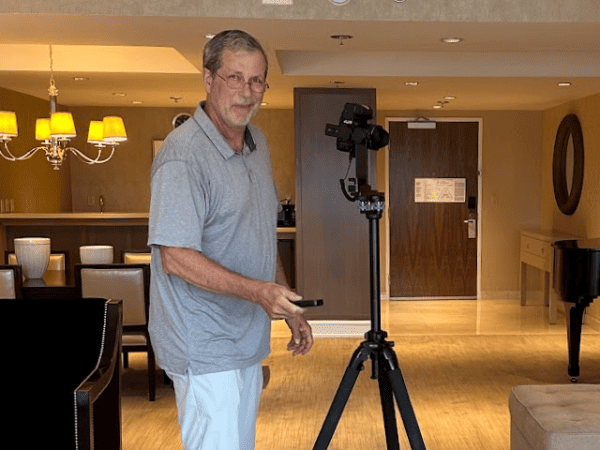
8 Reasons Not to get a Google Virtual Tour
September 27, 2023
Explore the Pro Club in Bellevue, WA
November 24, 2023Are you planning on flipping homes in the near future? If so, you should know that virtual tours have become a must-have when it comes to showcasing your property. With virtual tours, you can reach a broader audience, reduce physical visits, and save precious time. In this blog post, we will discuss the importance of virtual tours in home flipping and how they can help you sell your property faster. We will also dive into the tools and platforms needed to create engaging virtual tours that showcase your property’s potential to prospective buyers. Lastly, we’ll touch upon the future of home flipping and advancements in virtual tour technology that could revolutionize the way we flip homes forever. So, if you’re ready to take your home-flipping game up a notch, let’s get started!
Understanding the Concept of Home Flipping
Home flipping can be a profitable real estate investment strategy that involves buying a property and selling it for a higher price. However, it comes with potential financial risks and rewards. To succeed in home flipping, investors need to analyze market conditions and property values carefully. Renovation plays a crucial role in increasing the resale value of the property. By utilizing renovation projects strategically, flippers can make significant profits. It’s important to consider factors like repair costs, structural issues, and the cost of repairs when assessing the potential of a property. A good understanding of the housing market, as well as the assistance of a realtor, an appraiser, and a home inspector, is critical in making informed decisions.
Identifying Potential Listings for Flipping
When it comes to flipping homes, identifying potential listings is a crucial step in the process. To find the right property, you need to scour real estate listings for opportunities. Look for distressed properties or foreclosures that can be purchased at a lower price. Additionally, research growing neighborhoods with increasing property values to maximize your chances of a good return on investment. It’s important to analyze potential issues such as structural or electrical problems before making a purchase. Lastly, consider amenities and location for maximum appeal to potential buyers. By keeping these key factors in mind, you can identify the best options for your flipping project.
How To Find Houses To Flip
When it comes to finding houses to flip, there are several strategies you can employ. Networking with real estate agents and investors is a great way to discover potential opportunities. Additionally, searching online platforms like MLS or Zillow can provide a wealth of information on available properties. Attending auctions or foreclosure sales can also yield promising prospects. Another tactic is to drive around target neighborhoods and keep an eye out for sale signs. Lastly, reaching out directly to homeowners to inquire about potential sales can uncover hidden gems. By utilizing these methods, you can increase your chances of finding the right property to flip and maximize your profit potential.
Don’t Buy the Best House on the Street
When searching for properties to flip, it’s important to focus on those that have potential for improvement. Avoid overpaying for a property in a top-tier neighborhood, as this can eat into your profits. Instead, look for houses that need cosmetic upgrades or repairs, as these offer a great opportunity to add value through renovations. It’s also beneficial to opt for properties that offer room for a profit margin. By considering these key factors, such as the cost of repairs and the potential gross profit, you can ensure that you’re making a wise investment.
Analyzing the Financing Options
When it comes to flipping homes, analyzing the financing options is crucial. Start by researching different mortgage lenders and loan options to find the best fit for your needs. Assess the interest rates and terms offered by these lenders to ensure affordability. Calculate the renovation costs and necessary repairs to determine the overall budget for the project. It’s also important to consider the amount of time and money required for the flip. By evaluating potential profit based on financing and expenses, you can make an informed decision on whether a particular property is worth investing in.
How to Start Flipping Houses
Establishing a budget is a key starting point for house flipping projects, as it determines the scope of your endeavors. While DIY skills can be useful, it’s important not to oversell yourself and consider hiring professionals for complex renovations. Researching the local real estate market is crucial to identify areas with high potential for profit. Building relationships with reliable subcontractors and suppliers ensures efficient project management. Seeking guidance from experienced house flippers or real estate investors provides valuable insights. By following these steps, you can embark on a successful journey into the world of flipping homes.
Establish your Budget
To ensure the success of your house flipping projects, it is crucial to establish a realistic budget. Begin by assessing your financial capacity and determining how much you can comfortably invest in purchasing and renovating properties. Take into account additional costs such as financing, permits, insurance, and unexpected expenses. It’s important to prioritize necessary repairs and upgrades based on your budget allocation. To stay on track and maximize profitability, regularly track and review your budget throughout the process. A well-established budget sets a solid foundation for successful house flipping endeavors.
Don’t Oversell Your DIY Skills
Assessing your DIY skills realistically and understanding your limitations is crucial when flipping homes. While it may be tempting to tackle all aspects of the renovation yourself, it’s important to hire professionals for specialized tasks. This ensures high-quality repairs and renovations, preventing costly mistakes and delays. Instead of trying to do it all, focus on areas where your expertise can add value and consider outsourcing tasks beyond your capabilities. Collaborating with professionals results in a polished end product that will attract potential buyers and maximize your investment.
Build a Strong House-flipping Team
To ensure a successful house-flipping venture, building a strong team is crucial. Start by hiring a reliable contractor who can handle the construction work and bring your vision to life. Find a real estate agent who has expertise in buying and selling properties to help you navigate the market. It’s also essential to have a trustworthy accountant who can manage your finances and ensure everything is in order. A professional home inspector will assess the property for any issues, such as mold or structural issues. Additionally, consider hiring a property manager to handle day-to-day operations and a skilled marketing team to promote the flipped property effectively. By assembling a strong house-flipping team, you can streamline the process and increase your chances of success.
The Role of Renovation in Home Flipping
Enhancing the aesthetic appeal of a property is crucial in-home flipping. Upgrading key features can attract potential buyers and maximize the potential of the flip. However, it’s essential to balance renovation costs with potential profit. Assessing the market value and demand for upgrades helps determine the right investments. ARV, or After Repair Value, is a key factor to consider. It’s important to strike a balance between repair costs and the potential gross profit. Renovation projects also involve addressing structural issues, dealing with mold, and ensuring proper homeowner’s insurance coverage. By carefully planning renovations, flippers can increase the chances of a successful flip.
Determining the Scope and Timeline of Renovations
When it comes to flipping homes, determining the scope and timeline of renovations is crucial for success. To start, creating a detailed plan for the renovation work is essential. This involves breaking down tasks into phases to ensure efficient completion. It’s important to set realistic timelines based on available resources, taking into account potential delays or unexpected issues. Prioritizing necessary repairs and upgrades is also key in maximizing the property’s value. Factors such as mold, structural issues, and the cost of repairs should be considered. By carefully planning and prioritizing, you can ensure your renovation project stays on track and within budget while achieving the desired end result.
Hiring the Right Contractors for Renovation Work
When undertaking a home renovation project, hiring the right contractors is crucial for ensuring a successful outcome. It’s important to thoroughly research and vet reputable contractors who have experience in home renovations. Obtaining multiple quotes allows for comparison and helps determine the best option based on cost and quality. Checking references and previous work examples provides insight into the contractor’s expertise and reliability. Clear communication and established expectations ensure that the renovation work aligns with your vision. By following these key factors, you can hire the right contractors for your renovation project.
The Importance of Virtual Tours in Home Flipping
Incorporating virtual tours in home flipping is crucial for several reasons. Firstly, virtual tours help potential buyers visualize the property’s potential, allowing them to envision the transformation that can be achieved through renovations. Secondly, virtual tours create a sense of transparency and trust in the flipping process, as buyers can explore every nook and cranny of the property without any hidden surprises. Additionally, virtual tours provide buyers with the convenience and flexibility to explore homes at their own pace and convenience, thereby increasing engagement and interest. Furthermore, virtual tours offer an efficient way to showcase multiple properties to a wider audience, expanding the reach and attracting more potential buyers.
Creating Engaging Virtual Tours
To create engaging virtual tours for flipping homes, it is crucial to focus on well-curated staging and lighting. These elements enhance the overall experience by making the visuals more appealing and realistic. Additionally, high-quality visuals and smooth navigation are key factors in keeping potential buyers engaged throughout the tour. Interactive features such as floor plans and room measurements provide added value by allowing viewers to explore the property in detail. Descriptive captions and voiceovers further enrich the virtual tour storytelling, making it more immersive and informative. Attention to detail and professional editing ensure that the final virtual tour is engaging and captivating for prospective buyers.
Reaching Broader Audience with Virtual Tours
Incorporating virtual tours in home flipping allows for easy sharing across multiple online platforms and social media channels, attracting attention from both local and global audiences. These interactive tours can be accessed on various devices, reaching a wider demographic of potential buyers. By increasing exposure and visibility in the real estate market, virtual tours help reach a broader audience, leading to increased inquiries and potential offers. Embracing this technology is a great way to expand the reach of your flipping business and connect with a larger pool of interested buyers.
Reducing Physical Visits and Saving Time with Virtual Tours
By incorporating virtual tours into the home flipping process, both buyers and sellers can benefit from a reduction in physical visits and the subsequent time saved. Virtual tours allow buyers to minimize the need for multiple in-person property visits by providing a comprehensive visual experience of the home. This enables buyers to narrow down their options before scheduling physical visits, streamlining the overall home flipping timeline. Additionally, virtual tours reduce unnecessary foot traffic and disruptions to the flipped property, offering a more efficient and convenient solution for both parties. By embracing virtual tours, home flippers can save valuable time and resources, ultimately leading to a smoother and more successful flipping experience.
Future of Home Flipping: Advancements in Virtual Tours
Advancements in virtual tours are revolutionizing the future of home flipping. With advanced technology, potential buyers can now have immersive and interactive experiences as they explore properties remotely. These virtual tours provide a realistic representation of a property’s layout and features, allowing tech-savvy buyers to make informed decisions without physically visiting the property. By incorporating virtual tours into the marketing efforts of home flipping, investors can attract a wider audience and enhance the overall appeal of their flipped homes. The future of home flipping is bright with these advancements in virtual tours.
Conclusion
Virtual tours have become an essential tool in the home flipping industry. They offer numerous benefits for both sellers and buyers. Virtual tours allow potential buyers to explore a property from the comfort of their own homes, saving time and reducing the need for physical visits. They also help sellers reach a broader audience and showcase the property in an engaging and interactive way. With advancements in virtual tour technologies, the future of home flipping looks promising. If you’re interested in incorporating virtual tours into your home flipping strategy, get in touch with our team. We can provide guidance and recommendations on the best tools and platforms to create captivating virtual tours that will attract potential buyers and maximize your ROI.




